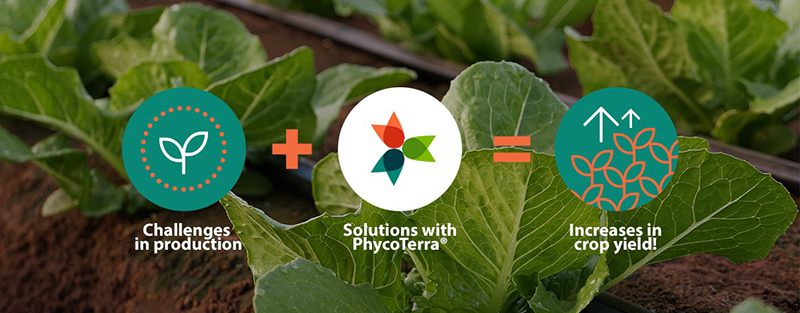Crop Outlook 2014: Potatoes, Tomatoes, And Lettuce
What do growers and researchers think this year will bring for the potato, tomato, and lettuce markets? American Vegetable Grower spoke to industry members from across the country who reviewed 2013 and shared expectations for 2014.
Last year, potato growers triumphed and bounced back from oversupply issues in 2012, tomato growers saw improved pricing, and lettuce growers struggled with weather issues. Click through the next four pages several pages for details on each crop.
Potatoes
Total production for processed potatoes is up 8.7% and is at its highest since 2000, according to the latest Vegetable and Pulses Outlook for 2013 published by USDA. Some of the reasons for the increased production numbers include a 5% increase in area harvested and a 3% increase in average yields compared to 2011. Nationwide, the number of acres harvested increased by 55,700. According to the report, 50,400 of those acres came from the top 13 producing states, with Idaho at the top of the list, followed by Washington.
Zeroing in on the West, Extension farm management specialist from the University of Idaho, Paul Patterson, helps lay out some of the major trends, and provides some insight for the coming year.

Paul Patterson
According to Patterson’s records, there was an overall slight decrease in production costs for Idaho growers in 2012 despite a spike in fuel, water, and seed prices. Weather was another key component in overall production numbers, and high temperatures stunted production in western Idaho, lowering yields compared to the previous year. Despite western Idaho’s troubles with warmer weather, the heat benefited the potato seed growing areas in Montana, giving them a 10-sack boost in production over 2011.
Increasing Price Of Inputs
One of the biggest cost drivers for Idaho and Washington in 2012 was the price of irrigation. Because the two states rely largely on hydropower, and the last several years have been poor in terms of water, they had to rely on thermal power out of the grid, which drove up costs significantly. According to Patterson, on top of these already increased prices, growers needed to apply more water to their crops because of the aforementioned high temperatures causing dry conditions.
Seeds were also another component that increased input costs, and as a result of a bad 2012 season, growers preemptively cut back on acreage, reducing the demand for seed, and softening the market.
Patterson estimates the return to growers was around half of the cost of production. “The market did rebound dramatically in June 2013 however,”
Patterson says.
“Returns to growers were about twice as high in the months of August, September, and October than they were a year ago,” he says. “I would expect that overall the 2013 crop year will be a lot better than growers experienced on their 2012 crop; I think that’s a given.”
Interest rates were also in growers’ favor this year: “I noted a quarter percentage drop in the interest in my budgets. Growers have been benefiting in recent years from very low interest rates, and that’s probably likely going to continue through 2014,” Patterson says.
Looking Toward The Future
Obviously, predicting the future is an impossibility, and as Patterson puts it, “There was an entomologist that said to me once: ‘Growers are always ready to fight last year’s problems.’ But those aren’t the ones that are going to get them. I would advise to not be so fixated on problems that they may have had in 2013 that they’re not attentive to something unexpected that may come along.”
Aside from planning for uncertainties, one thing growers can control is the amount of acres they’re planting. Generally speaking, the fewer acres you plant, the more money you make per acre. “It’s balancing supply and demand,” Patterson states.
Click on the next page to read about tomatoes…
Tomatoes
California produces nearly 97% of the processing tomato crop, and according to recent reports from USDA and the 2013 California Processing Report, overall production for 2013 was projected to be 13.6 million tons — the second highest amount on record. Unfortunately, crop losses in California caused that number to be short of what was projected.
Grower’s Perspective
Don Cameron of Terranova Ranch in Helm, CA, a producer of processing tomatoes, saw devastating crop losses in 2013 as a result of curly top virus. The virus hit the hardest in the San Joaquin Valley, and some fields needed to be replanted entirely. Yields were extremely low in spite of growers’ efforts to target the disease’s vector, the beet leafhopper, which according to Cameron is a very difficult pest to kill.
In addition to pest struggles, excessive heat stressed the plants adding to the already decreased yields. “The canners contracted for a little over 13 million tons, and ended up with 12.1 million, more than 900,000 tons short of what they projected,” Cameron says.

Don Cameron
Because the industry fell short last year, expectations from the suppliers have increased to make up for lost profit. In other words, they’ll contract for more in 2014, and prices will be higher.
Because of the drought conditions in California, water is scarce and expensive. Nevertheless, growers have been able to work with the dry conditions via efficient irrigation, and maintained stable yields despite the drought, up until curly top hit.
The good news is that while the actual production numbers were down, the quality was very high. “The percent of solids was better as a result of the smaller crop size,” he says, adding that he will take preventive steps against curly top in the future.
“We’re going to have to be preemptive with the insecticides that we’re putting through our drip irrigation,” stresses Cameron.
A View From Florida
In the Sunshine State, Reggie Brown, executive vice president of the Florida Tomato Growers Exchange, says he expects the fresh market production numbers in 2014 to appear relatively similar to 2013. “The industry in Florida has contracted over the last decade, but last year we reached a stable point in that process, and I fully anticipate this year for the production in Florida to be equivalent to last year,” he explains.

Reggie Brown
Brown affirms that the signing of the Tomato Suspension Agreement in early 2013 significantly changed the import limitations of Mexican tomatoes. He says that the current reference price for the winter production period where Florida competes with Mexico has risen from 21.6¢ a pound to 31¢ a pound, and the reference prices for a 25-pound container rose from $5.81 to $8.30.
After the agreement was signed in early March, the industry saw significant change in the marketplace compared to the same time period the previous year, which Brown says may be attributed to a number of factors.
“Some of that may have been the uncertainty created by trade issues prior to the agreement being signed, so planting decisions may have been altered in Mexico. Another part of it may have simply been a response to supply changes domestically here in the U.S.,” he states. Currently, however, prices are stable in the U.S.
Brown notes that Florida produced more than 35 million 25 pound boxes of tomatoes under the Federal Marketing order, which is on par with production for the past two to three years. Despite this stability the market has seen the last few years, looking back seven to eight years ago before the cheaper Mexican tomatoes entered the market, they were producing $45 to $50 million worth of the crop.
Click on the next page to read about lettuce…
Lettuce
Lettuce production was down overall last year due to the effects of harsh weather in the desert growing regions of California and Arizona, as well as in Florida. According to USDA’s Vegetable and Pulses Outlook for 2013, at the end of 2012 warm weather spurred crop growth in Arizona and California; however a frost in the beginning of 2013 reduced volume significantly, and increased the Producer Price Index by more than 60% between December 2012 and January 2013. At the time the report was published, they expected the first quarter prices for 2013 to be 150% greater than they were the previous year.
A Western Point Of View
Steve Alameda, grower and part owner of Top Flavor Farms in Yuma, AZ, and president of the Yuma Fresh Vegetable Association, confirms USDA’s reports. “We ended up having a good year financially just because of the lack of supply. Because of the weather the quality was off, the count was off, and so in the vegetable business, we usually do the best financially when our crop isn’t all that good,” Alameda mentions.

Steve Alameda
Because of the slow start they got off to in 2013, some of the processors began what’s referred to as reaching, which is when they go into the fields before the crop is ready, harvest the plants, and then take them to market. Unfortunately, this practice can result in lower yields for growers and a lesser quality crop. According to Alameda, the pressure from the processors and the retailers only lasted until around February after the yields began to return to normal.
Water Shortages In The Golden State
Over in Salinas, CA, growers were facing an entirely different set of challenges. They began the year with an oversupply of leafy greens setting a low market price, but were able to compensate by supplying to the East Coast, which was struggling to meet demand due to heavy rainfall during the summer months.
“There was a lot of rain that damaged the crop, the whole East Coast was terribly wet. They had disease problems, they couldn’t plant, they had quality problems, and they couldn’t harvest — it was bad. They needed our product out here for most of the summer. It kind of boosted the Salinas market, and for that reason it went fairly well for us too,” Alameda explains.
Labor Concerns
While labor has been a pain point for many growers across the country, Alameda had a few good things to say about his experience in 2013, adding that in Yuma, they’re doing the best they can with what they have. For now, they’re utilizing the H-2A program.
“There was somewhere between 3,000 to 4,000 H-2A workers in the Yuma area helping the local force that we already have. That was a very important thing that happened,” Alameda adds.
Optimistic Outlook For 2014
Alameda notes that organic produce, kale, and other nutrient-rich vegetables have spiked in demand in recent years and guesses that they will probably continue to stay in demand in the future due to consumers’ increasing interest in healthier produce.
Generally speaking, Alameda says that they are always optimistic and hopeful about being profitable, but in the end, weather largely determines the outcome. His advice on dealing with weather is to make sure that your crop is robust and healthy to begin with so it can manage potential climate stresses, whether it be extreme heat or extreme cold. Being prepared and diligent, he says, are growers’ only options.









